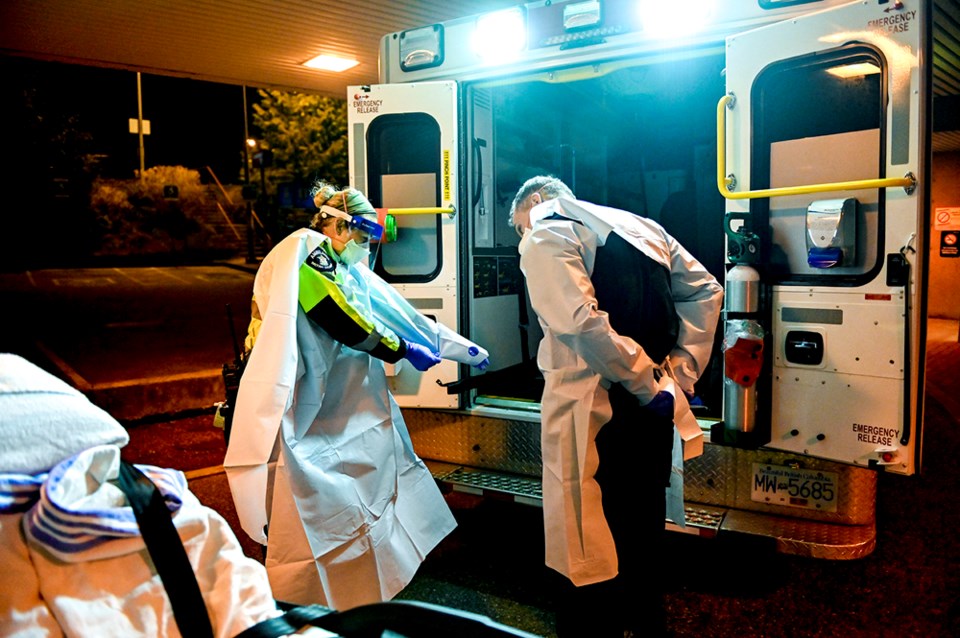Wellness checks, health clinics, CPR and overdose reversal training – these are some of things community paramedics do in 99 remote communities across B.C.
And it’s something the Ambulance Paramedics of BC (APBC) union thinks they could do across Metro Vancouver to take the heat off the emergency health system.
The union pitched the idea to various councillors and Union of B.C. Municipalities (UBCM) delegates this week at its annual convention many of whom were “responsive,” said APBC president Troy Clifford.
Community paramedics have been operating in rural and remote communities in B.C. since 2015, but Clifford thinks they would fit in well in urban areas, like Richmond, teaming up with the health authority or community policing and filling in existing gaps of an already over-stretched health-care system.
The idea is to divert people from the 911 system where possible and stop tying up ambulances unnecessarily.
“It’s going to require funding, obviously, but our evidence and the evidence from our colleagues across Canada is that it’s cost-effective on the health-care system and it’s good for the paramedics and it’s good for the system,” Clifford said.
Community paramedics have been operating across Canada for a few decades.
Some are focused in very urban areas, like Winnipeg, which has the “Main Street Project,” and others are in more suburban places, like Renfrew County, Ont.
The Winnipeg community paramedics focus on the at-risk population and help with psychosocial issues, disease testing and navigating the health-care system, explained Dave Deines, president of the Paramedic Association of Canada.
He pointed out community paramedicine across Canada is tailored to the needs of each community
In Renfew County, which Deines said is similar to a community like Richmond, community paramedics target high-use patients, diabetics, people with chronic breathing or heart problems or do risk assessment, for example, in falls. They can also monitor medication compliance with chronic patients.
“The advantage is every community in B.C. has a paramedic, whereas that’s not the case for other health disciplines, for example, in Richmond, there’s not enough support for people who are discharged from hospital,” Deines said.
Some health calls to 911 are not emergency calls that need transport to hospital, but the model is to send an ambulance with two paramedics.
“That takes an emergency paramedic out of the system, whereas in these jurisdictions, they can secondarily triage that to community paramedicine, and they follow up in a non-emergent environment,” he added.
If they do need to go to the hospital, the community paramedic can start the treatment while waiting for the ambulance to arrive.
“It’s not reinventing the wheel … it’s been successfully used for several decades now in other jurisdictions in Canada,” Deines said.
While in rural B.C., community paramedics usually deal with patients in a home setting, in an urban environment, this could be extended to people living on the streets, Clifford explained.
This model of paramedicine would also give a different career path for paramedics who might be getting burned out from the physical and mental-health toll that being on the frontlines of emergency health takes on them, Clifford said.
BC Emergency Health Services said, as part of their long-range planning, they will explore expanding the community paramedic program beyond its current rural and remote mandate.



